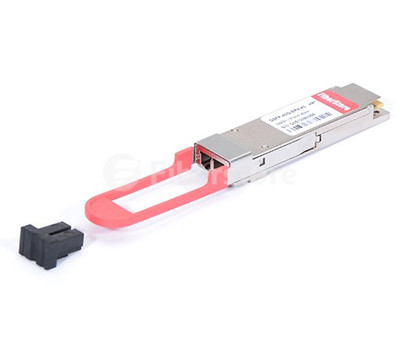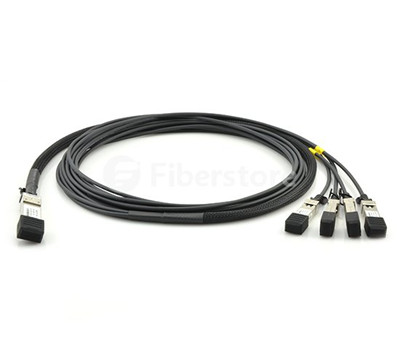In today’s server networks, 40GbE has become commonplace and has gradually taken over multiple 10GbE links to each server. Installation of 40GbE devices in the field will be a requirement for customer service and reduced operating costs. So are you ready for embracing 40GbE era? But how should the network prepare for delivering 40GbE to servers?
The core of the 40GbE networking, just like the 1GbE or 10GbE networks, is a pair of transceiver modules connected by optical patch cables. Thus the issue here is to pick the right 40GbE optical devices for your network server. 40G optical transceiver modules has several form factors—CFP (C form-factor pluggable) transceiver, CXP transceiver form factor and QSFP/QSFP+ (quad small-form-factor pluggable) transceiver. 40G QSFP modules recently gain more popularity on the market as a result of its small size and high performance. Thus selecting 40G QSFP modules is a cost-effective solution for your 40GbE network server.
A Quick Overview of QSFP Transceiver Modules
QSFP is a compact, hot-pluggable transceiver used to plug into network servers, interface cards or switches. It provides four transmit and four receive lanes to support 40GbE applications for multi-mode and single-mode fiber and copper today. A variety of QSFP transceivers are available on the market, such as QSFP-40G-CSR4, QSFP-40G-PLR4, 40GBASE-PLRL4, QSFP-40G-SR4, QSFP-40G-LR4, etc. Take QSFP-40G-ER4 (see in Figure 1) as an example, it is the compatible Cisco QSFP-40G-ER4 QSFP modules that extend the reach of the IEEE 40GBASE-ER4 interface to 40km on single-mode fiber.

DAC and AOC Cabling
The standards for 40GbE have been around for more than 2 years, and a number of routers, switches, and network cards have already operated at this speed. 40GbE cabling is also an important segment of upgrading your network. As we know that the most cost-effective cabling for both 10GbE and 40GbE is the direct attached cable (DAC) type based on twinaxial cabling. Such cables are based on copper and have transceivers directly connected to each end of the cable. 40GbE uses the slightly larger QSFP transceivers, which internally are made up of four 10Gbit/s lanes. DAC cables exist in lengths up to 10 meters, but the price increases substantially when the cables get longer than 3 to 5 meters. When longer runs of 10GbE or 40GbE than 10 meters are needed, fiber cabling and separate transceivers are the only option. Active optical cables can achieve high data center over long reaches. In addition to achieving longer reach, the lower weight and tighter bend radius of AOCs enable simpler cable management and the thinner cables allows better airflow for cooling. But the cost of each transceiver is usually several times that of one DAC cable. Constraints like that are important to take into account when designing a data center network. Figure 2 shows a compatible Cisco QSFP-4SFP10G-CU3M QSFP+ to 4SFP+ Passive Breakout Copper Cable.

Prospect
- 40 GbE will arrive for Top of Rack solutions in 2016.
- Switches in the campus backbone and aggregation layers should be ready for replacement/upgrading in 2016 to support 40GbE.
- Do not install any cabling in your data center or campus backbone. 40GbE uses 8 fiber cores for multi-mode and 1 pair for single mode. The cable will be OM4 although OM3 will have shorter distances. Provision the least amount of cable until new cabling solutions arrive.
- Spending money on expensive 10GbE switches will be wasted as they are likely to be replaced in 2016 with 40GbE. Most server people are already deploying/asking for 4x10GbE per chassis and it probably be cheaper to use a 40GbE QSPF than four 10G SFP modules in two to three years time.
Summary
Believe it or not, the 40 Gigabit Ethernet era is already upon us. Therefore it is essential to make yourself well prepared for the incoming big data age. Over these years, Fiberstore has built a good reputation for uncompromising product quality, reliability and technical innovation. We offer a broadest portfolio of optical devices on the market today. For more detailed information, please contact us directly.
